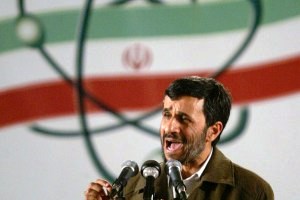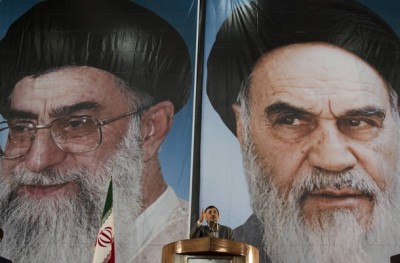
By Ray Takeyh,
Bombastic claims of nuclear achievement, threats to close critical international waterways, alleged terrorist plots and hints of diplomatic outreach — all are emanating from Tehran right now. This past week, confrontation between Iran and the West reached new heights as Israel accused Iran of a bombing attempt in Bangkok and others targeting Israeli diplomats in India and Georgia. And yet, on Wednesday, an Iranian nuclear negotiator signaled that Tehran wants to get back to the table.
What does Iran really want? What, as strategists might ask, are the sources of Iranian conduct?
The key to unraveling the Islamic republic lies in understanding Iran’s perception of itself. More than any other Middle Eastern nation, Iran has always imagined itself as the natural hegemon of its neighborhood. As the Persian empire shrank over the centuries and Persian culture faded with the arrival of more alluring Western mores, Iran’s exaggerated view of itself remained largely intact. By dint of history, Iranians believe that their nation deserves regional preeminence.
However, Iran’s foreign policy is also built on the foundations of the theocratic regime and the 1979 revolution. Ayatollah Ruhollah Khomeini bequeathed to his successors an ideology that divided the world between oppressors and the oppressed. The Islamic revolution was a battle for emancipation from the cultural and political tentacles of the iniquitous West. However, Iran was not merely seeking independence and autonomy, but wanted to project its Islamist message beyond its borders. Khomeini’s ideology and Iran’s nationalist aspirations created a revolutionary, populist approach to the region’s status quo.
Iran’s enduring revolutionary zeal may seem puzzling because, in many ways, China has come to define our impressions of a revolutionary state. At the outset, ideology determined Beijing’s foreign policy, even to the detriment of its practical interests, but over time, new generations of leaders discarded such a rigid approach. Today, there is nothing particularly communist about the Chinese Communist Party.
By the 1990s, Iran appeared to be following in the footsteps of states such as China and Vietnam, as pragmatic leaders such as Ali Akbar Hashemi Rafsanjani and reformers such as Mohammad Khatami struggled to emancipate their republic from Khomeini’s onerous ideology. But what makes Iran peculiar is that this evolution was deliberately halted by a younger generation of leaders such as Mahmoud Ahmadinejad who rejected the pragmatic approach in favor of reclaiming the legacy of Khomeini. “Returning to the roots of the revolution” became their mantra.
Under the auspices of an austere and dogmatic supreme leader, Ayatollah Ali Khamenei, a “war generation” is taking control in Iran — young rightists who were molded by the prolonged war with Iraq in the 1980s. Although committed to the religious pedigree of the state, the callow reactionaries have at times been critical of their elders for their passivity in the imposition of Islamic cultural restrictions and for the rampant corruption that has engulfed the nation. As Iran’s revolution matures, and the politicians who were present at its creation gradually fade from the scene, a more doctrinaire generation is taking command. Situated in the security services, the Revolutionary Guard Corps and increasingly the elected institutions, they are becoming more powerful than their moderate elders.
This group’s international outlook was shaped by the devastating Iran-Iraq war. In the veterans’ self-serving view, Iran’s failure to overthrow Saddam Hussein had more to do with superpower intervention and less to do with their poor planning and lack of resources. The Western states and the United Nations, which failed to register even a perfunctory protest against Iraq’s massive use of chemical weapons, are to be treated with suspicion and hostility. Struggle and sacrifice have come to displace dialogue and detente.
 As with Khomeini, a central tenet of the young conservatives’ foreign policy perspective is that Iran’s revolution was a remarkable historical achievement that the United States can neither accept nor accommodate. The Western powers will always conspire against an Islamic state that they cannot control. The only way Iran can be independent and achieve its national objectives is through confrontation. The viability of the Islamic republic cannot be negotiated with the West; it has to be claimed through steadfastness and defiance.
As with Khomeini, a central tenet of the young conservatives’ foreign policy perspective is that Iran’s revolution was a remarkable historical achievement that the United States can neither accept nor accommodate. The Western powers will always conspire against an Islamic state that they cannot control. The only way Iran can be independent and achieve its national objectives is through confrontation. The viability of the Islamic republic cannot be negotiated with the West; it has to be claimed through steadfastness and defiance.
Iran’s nuclear program did not begin with the rise of this war generation. The nation has long invested in its atomic infrastructure. However, more so than any of their predecessors, Iran’s current rulers see nuclear arms as central to their national ambitions. While the Rafsanjani and Khatami administrations looked at nuclear weapons as tools of deterrence, for the conservatives they are a critical means of solidifying Iran’s preeminence in the region. A hegemonic Iran requires a robust and extensive nuclear apparatus.
The maturing of the nuclear program has generated its share of nationalistic fervor, and the regime has certainly done its share to promote the importance of the atomic industry as a pathway to scientific achievement and national greatness. From issuing stamps commemorating the program to celebrating the enrichment of uranium, the clerical regime believes that a national commitment to nuclear self-sufficiency can revive its political fortunes.
The problem with this approach is that, once such a nationalistic narrative is created, it becomes difficult for the government to offer any concessions without risking a popular backlash. After years of proclaiming that constructing an indigenous nuclear industry is the most important issue confronting Iran since the nationalization of the oil industry in 1951, the government will find it difficult to justify compromises. The Islamic republic’s strategy of marrying its identity to nuclear aggrandizement makes the task of diplomacy even more daunting.
Yet, Iran’s determination to advance its nuclear program has come at a considerable cost. Today, the country stands politically and economically isolated. The intense international pressure on Iran has seemingly invited an interest in diplomacy.
From Tehran’s perspective, protracted diplomacy has the advantage of potentially dividing the international community, shielding Iran’s facilities from military retribution and easing economic sanctions. Iran may have to be patient in its quest to get the bomb; it may have to offer confidence-building measures and placate its allies in Beijing and Moscow. Any concessions it makes will probably be reversible and symbolic so as not to derail the overall trajectory of the nuclear program.
Can Tehran be pressed into conceding to a viable arms-control treaty? On the surface, it is hard to see how Iran’s leaders could easily reconsider their national interest. The international community is confronting an Islamic republic in which moderate voices have been excised from power.
However, it may still be possible to disarm Iran without using force. The key figure remains Khamenei, who maintains the authority and stature to impose a decision on his reluctant disciples. A coercive strategy that exploits not just Khamenei’s economic distress but his political vulnerabilities may cause him to reach beyond his narrow circle, broaden his coalition and inject a measure of pragmatism into his state’s deliberations. As with most ideologues, Iran’s supreme leader worries more about political dissent than economic privation. Such a strategy requires not additional sanctions but considerable imagination.
Ray Takeyh is a senior fellow at the Council on Foreign Relations and the author of “Guardians of the Revolution: Iran and the World in the Age of the Ayatollahs.”
Washington Post
Leave a Reply
You must be logged in to post a comment.